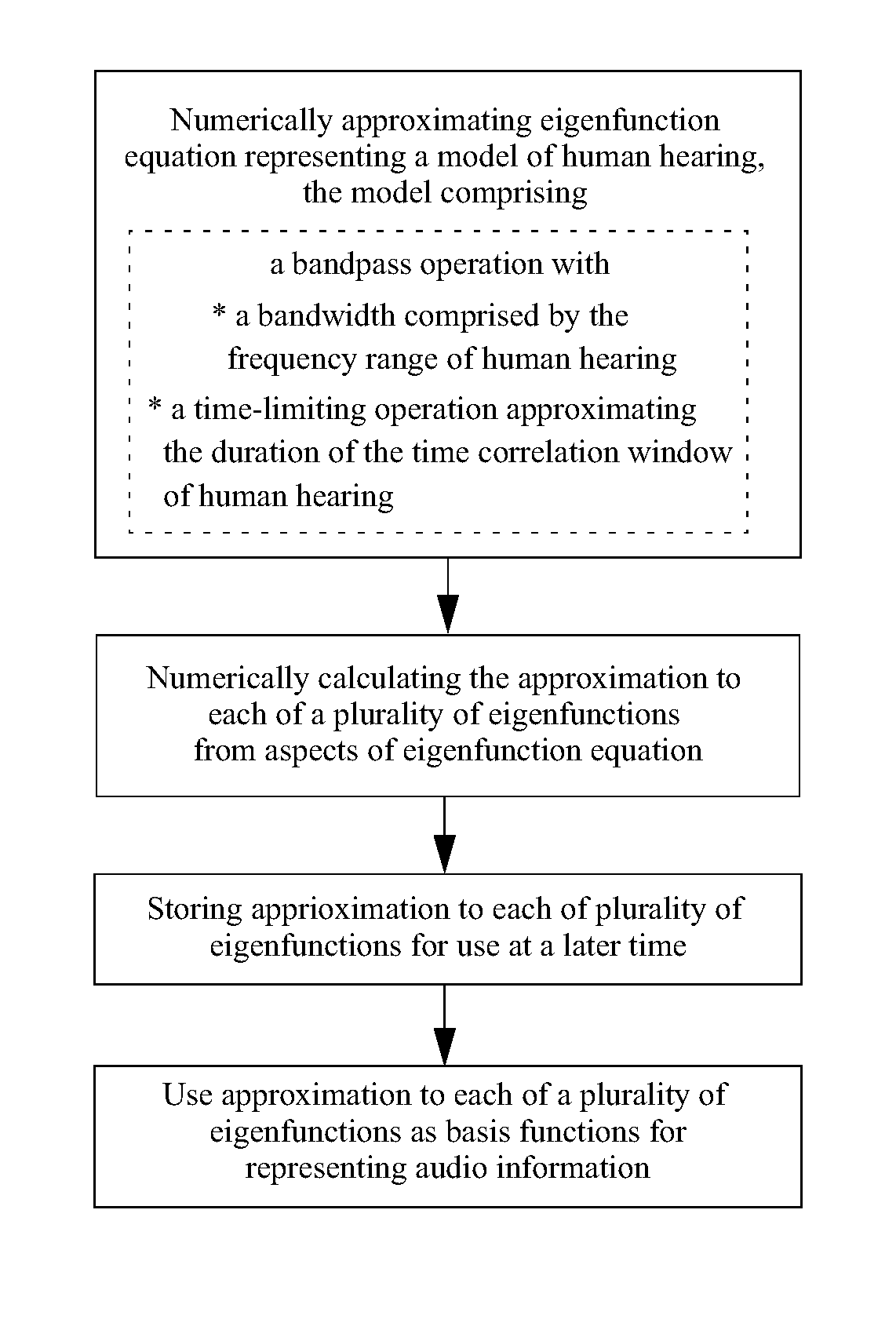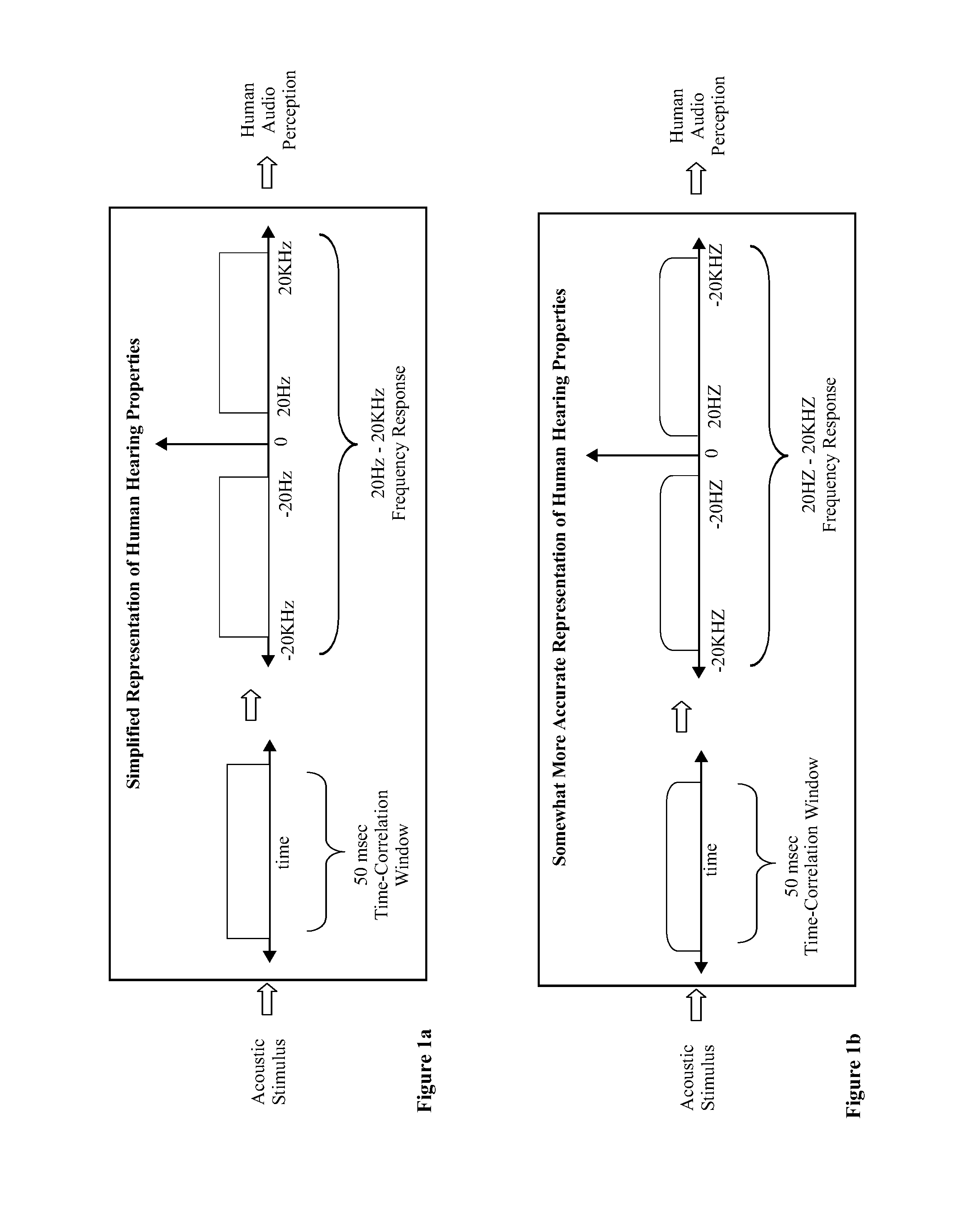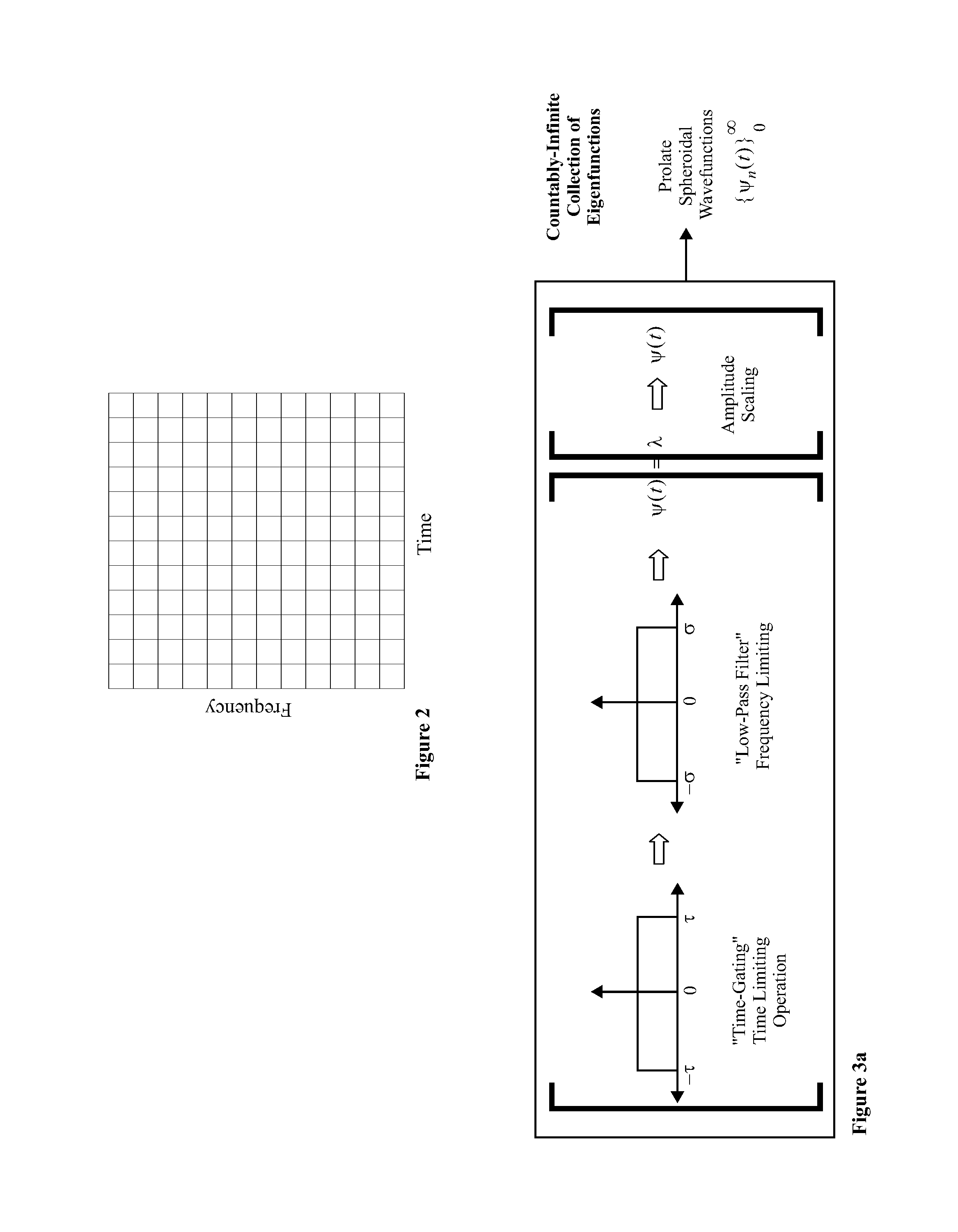Auditory eigenfunction systems and methods
a technology of auditory perception and eigenfunction, applied in the field of dynamical time and frequency limitation properties of the hearing mechanism, can solve the problems of human ears not being able to detect vibrations or sounds with lesser or greater frequency, and the function cannot be both time and frequency limited
- Summary
- Abstract
- Description
- Claims
- Application Information
AI Technical Summary
Benefits of technology
Problems solved by technology
Method used
Image
Examples
Embodiment Construction
[0071]In the following detailed description, reference is made to the accompanying drawing figures which form a part hereof, and which show by way of illustration specific embodiments of the invention. It is to be understood by those of ordinary skill in this technological field that other embodiments can be utilized, and structural, electrical, as well as procedural changes can be made without departing from the scope of the present invention. Wherever possible, the same element reference numbers will be used throughout the drawings to refer to the same or similar parts.
[0072]1. A Primitive Empirical Model of Human Hearing
[0073]A simplified model of the temporal and pitch perception aspects of the human hearing process useful for the initial purposes of the invention is shown in FIG. 1a. In this simplified model, external audio stimulus is projected into a “domain of auditory perception” by a confluence of operations that empirically exhibit a 50 msec time-limiting “gating” behavio...
PUM
 Login to View More
Login to View More Abstract
Description
Claims
Application Information
 Login to View More
Login to View More - R&D
- Intellectual Property
- Life Sciences
- Materials
- Tech Scout
- Unparalleled Data Quality
- Higher Quality Content
- 60% Fewer Hallucinations
Browse by: Latest US Patents, China's latest patents, Technical Efficacy Thesaurus, Application Domain, Technology Topic, Popular Technical Reports.
© 2025 PatSnap. All rights reserved.Legal|Privacy policy|Modern Slavery Act Transparency Statement|Sitemap|About US| Contact US: help@patsnap.com



